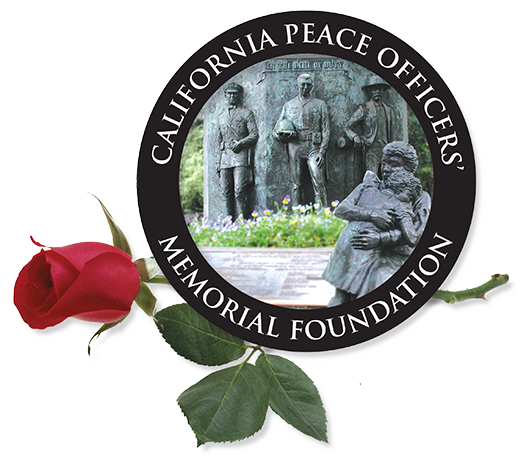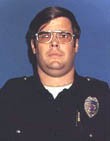By Catherine Mervyn
(Public School Teacher – Retired)
Many have been the John Adairs who’ve thrilled my students in my classroom, but this John Adair is no more, and to him and all the others, I offer tribute.
For John Adair there was no illness to be diagnosed, no prescriptions to be filled, no anxious moments to wait out. There was no time for tender moments, nor tender loving care to satisfy the caring heart. One furtive missile, “an inch below the safety belt,” swiftly performed its deadly act, and all was over. Years of education, well-made plans, lovers’ dreams, father’s hopes, all too quickly ended.
“I lived it all over again,” said Chief R. Owens of the Oxnard Police Department. He and I both remembered a similar incident, nine years ago, when Officer Fred Clark met a similar fate. Fred, too, answered a call for a domestic quarrel, a call loathed by every peace officer.
It was a warm October evening as I drove up in front of the mortuary where Officer John lay in state. The sky was clear, few stars were shining, and all seemed at peace. The vacant black-and-white cruiser was there, parked in the driveway, mute symbol of the man not on duty, less protection for the city’s citizens, a loved one eternally removed.
My hesitant hand rested gently upon the chapel’s swinging double-doors. The stale air was felt moving as one of the doors gave way to my slight pressure. One step inside . . . a moment’s hesitation . . . Why, oh God? I was overwhelmed by frustration.
There were no mourners at the moment. The chapel’s wooden pews, naturally stained, were vacant. The supporting ceiling beams were bare as were the off-white painted walls. The six stained-glass windows, three to a side, provided the only break in the otherwise blank walls.
A variety of flower scents mingled to give a pungent odor to the thick, stifling air. On the fair-end-wall, across from the entrance, a stained glass window rose above the walnut casket, with a compassionate Good Shepherd looking down upon His gentle sheep. A myriad of flower arrangements surrounded the casket.
Beside the casket, one at each end, stood two men in the navy-blue uniform of the Oxnard Police. In white-gloved hands, they stood to keep vigil and pay honor to the fallen man, one last gesture of respect and comradeship.
There was an awesome stillness in that lonely chapel, and the feeling of intrusion was overpowering. I tensed my muscles, and stood erect. Decidedly I walked up to the casket. Out of the corner of my right eye I noticed that I knew well one guard of honor from past experience, but neither of us acknowledged the identity. This was not my classroom it was, rather, death’s domain, and a different task to be accomplished.
I bent my head to look at the Officer, lying in the white-lined casket, a sharp contrast to the navy uniform he wore. John Adair, the name tag stated on the right side of his chest, just above the shirt pocket. On the left side, the Police Badge, Number 18. (“A Badge of Honor!” I remembered telling my students. I still have the collection of “Police Stories” my students wrote.) The Badge was a silent reminder of an explanation a police gave to my students for the acronym P.I.G., “Perseverance, Integrity, Guts.” The children were impressed.
He was here in full uniform, up to the two pens in his left pocket, and a service bar on his left sleeve.
“Six-foot-four,” they said. No wonder the casket seemed short for him!
I felt compelled to touch the human form, and as I didn’t, I found that life yet seemed to linger in that death-cold hand!
Men came in, some alone, some with wives. Most came alone to pay their final respects. They came in uniform and in civilian clothes. There was no need to wonder who they were. The neat haircuts, the way they walked, the stance they took, the tear they shed . . . all bespoke a bond of love and unity. Some knelt and crossed themselves, others simply stood there, in total helplessness, and frustration.
They came and left, no one lingered long. The reverent silence was monstrously profound, penetrated only by the occasional squeaking of leather shoes as the two honor guards slowly shifted their weight in brief relief from standing.
Then almost cruelly, the intense silence was shattered. The double-doors swung wildly open and a drab young man penetrated that sanctuary. There was immediate tenseness in the air. No one moved.
“Hey!” The young man called out loudly, his right arm flinging in the air, his face grinning in twisted amusement. Obtaining no reaction from the standing men of honor, he swaggered halfway to the casket, stopped, then as if in self-reproach, turned and left that sacred place.
Almost in retaliation, an elderly man came in. Bent from age . . . and work, white hair, and wearing casual clothes, he slowly made his way to the slain officer, paused for a moment, then resolutely turned to the silent guard to his right. With trembling voice, and deep respect, he, too, was heard amid the sorrowful stillness.
His “Thank You” sounded like a Great Amen. He spoke the words clearly and simply. Expecting no response, he slowly and sadly made his way to the out-of-doors.
The unfeeling clock’s hand on the wall, above the entrance, moves on for the living, and life continues, unaffected for some, changed for others. I, too, join the gentleman in saying, “Thank You!” But, Dear God, when will people learn to value YOUR ways?

